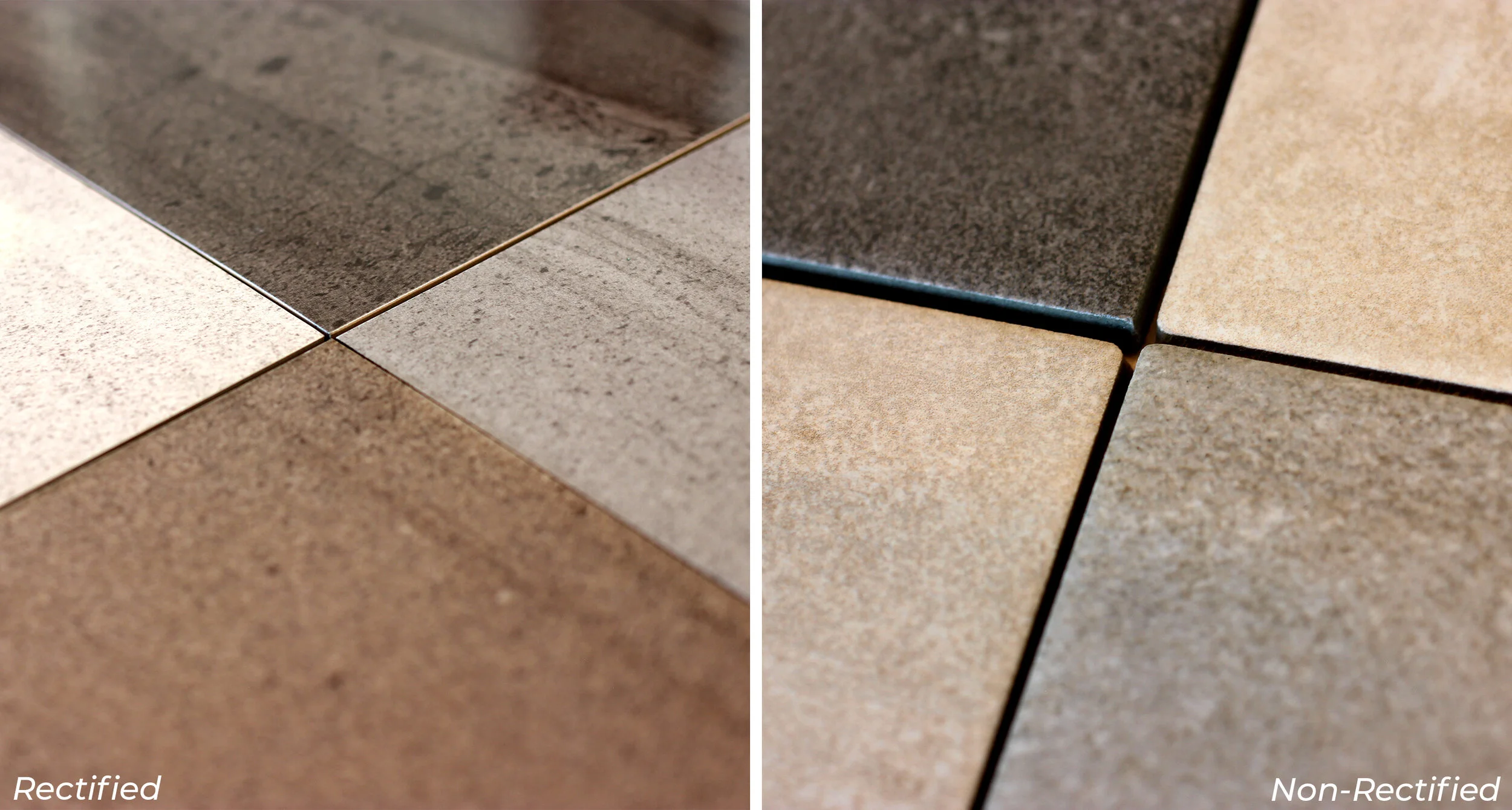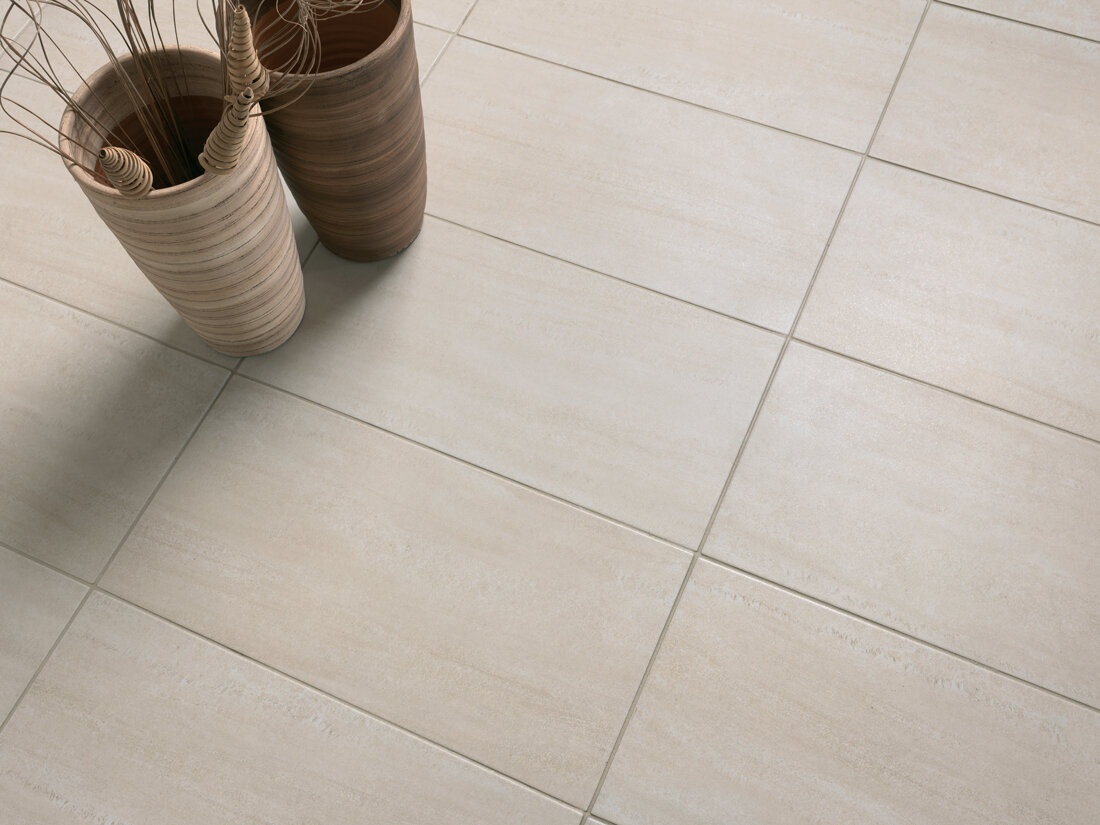Rectified vs. Non-Rectified
You’re diving deep into your latest project. The number of available tile choices is somewhat overwhelming. Then, you hear someone ask if you’d prefer “rectified or non-rectified” tile. Your head is already spinning and now you have no idea how to answer this question because the term if completely foreign to you. Don’t worry, you’re not alone! We’re here to clarify these terms for you and show you examples. That way, next time someone asks you “rectified or non-rectified”, you can answer them with confidence!
What on Earth is Rectified Tile?
Simply put the term “rectified” is referring to a process in manufacturing where the edges of porcelain tiles are ground or cut to minimize size variations between tiles, create a clean, smooth edge.
See? Doesn’t sound so complicated now, right?
But why would you need to rectify the edge of a tile? Well, during the firing process, tiles can shrink and warp slightly (very slightly!) because of the high temperatures at which tile is fired. This can cause a slight variation is size between each tile and marginally irregular edges.
To make sure each tile is EXACTLY the same size from tile to tile, the manufacturer can grind, saw or laser-cut the edges.
So you may be asking yourself, “Then wouldn’t I ALWAYS want a tile that’s rectified?” and our answer is… not necessarily. It all comes down to the type of look you want to achieve.
Why Would You Want Rectified?
Pictured: Charisma Luxor Porcelain Tile
Rectified tile doesn’t necessarily mean it’s a “better” option. It’s simply a newer process that makes certain aesthetics achievable. The precise, straight edge of these tiles make it possible to use smaller grout lines, allowing the tiles to sit much closer together. This is a great option if you want a more “modern” look or you simply don’t like the look of grout lines. It also allows you to achieve the “seamless” look from tile to tile.
Why Would You Want Non-Rectified?
Pictured: Alps Beige Porcelain Tile
Maybe the look you’re going for is more of a traditional, classic look. Or you just want the space to look a little more casual and relaxed. If this is the case, non-rectified is the way to go. Because the edges haven’t been cut or sanded down, the edges of the tile may be slightly irregular. We’re not saying you’re tiles are going to look jagged or sloppy, they’ll just have more of a “hand-made” look. Which will still look amazing! Because the edges aren’t perfectly, razor straight, your grout line will need to be slightly larger.
In Conclusion
Simply put, it all comes down to preference and what kind of look you are trying to achieve when deciding between rectified and non-rectified. Neither option is better than the other. There is no right or wrong answer when choosing. Each option has its upside. All you need to do is decide which option best fits your needs.



